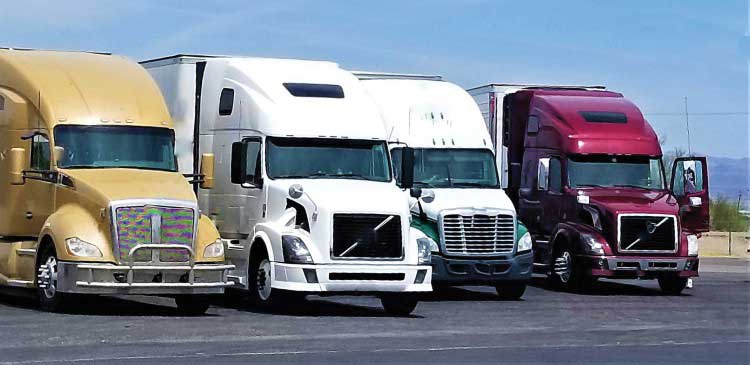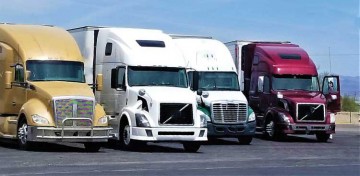What to Expect from Modern TMS
According to Gartner, a TMS (transportation management system) is an application used to plan freight movements, do freight rating and shopping across all modes, select the appropriate route and carrier, and manage freight bills and payments.
Over the past two decades, the logistics and supply chain industry has dramatically changed, especially the technology. The freight and transportation industries are slow to adapt and change in creating a challenging environment. Fortunately for shippers, Cloud based TMS platforms have become extremely sophisticated and keep shippers upgraded to new innovations made in these solutions.
The global TMS market size is expected to grow from $11.7 billion in 2022 to $28 billion in 2030 at a CAGR of 19.1%. Along with a rise in eCommerce across the globe, the covid-19 pandemic has accelerated the adoption of cloud-based TMS solutions over the past couple of years. The need for digitization and the irreversible change in consumer behavior regarding online shopping is shaping this trend.
Key Challenges of a Shipper
As a shipper or dispatcher, your job is to move freight efficiently and deliver a great customer experience. However, in this process, there are numerous hurdles for shippers to overcome:
Manual Processes: Things are changing, but the logistics industry still relies on manual tasks. Reliance on manual tasks often leads to errors, and shippers realize the value of digitizing and automating processes.
Carrier Selection: There are several carriers one needs to choose from, and often, carriers run special deals on their websites or other sources. A modern TMS brings all available carriers in one place and helps you choose the best carrier depending on the set parameters.
Tracking & Visibility: With so many variables and increasing end customer expectations, knowing where the freight is and when it will arrive at its intended destination is a huge challenge for shippers and dispatchers.
Invoicing & Driver Management: Another huge pain point is being able to track all financials, such as invoicing, auditing, and payrolls, all in one place. A financial system working in a silo leads to huge hassles.
The Modern TMS (Transportation Management System) Answer
Over the years, technologists along with supply chain experts have nibbled away at the problem, and we’re now at a stage where a single platform like ShipmentX can take care of end-to-end transportation management requirements.
Easy Integration: One of the biggest challenges a shipper faces is to get various systems for different legs to talk to each other. With APIs and Webhooks, a modern TMS makes it very easy for several systems to talk to each other so that data can flow easily and a brand can have a single application, creating a holistic end-to-end transportation management.
Real-Time Visibility and Tracking: Another major challenge that a cloud-based TMS solves is the ability to offer complete visibility from a single screen. An operations manager can get a complete view of the logistics operations, and customers can also be provided with a tracking link, so they know exactly where their shipment is.
Global Multi Leg Planning and Optimization: Through the dashboard, a shipper can plan and automate delivery operations considering several modes of transport. Be it by road, rail, air, or sea; a modern TMS allows you to consolidate, visualize and optimize freight movement efficiently.
Settlements and Invoicing: A modern TMS like ShipmentX also has a driver’s app where photos of bills can be uploaded, or direct entries can be made. This automatically syncs up with the financial system, and an invoice can be generated. Driver payroll management can also be managed from the same platform.
Risk-free Freemium Model: Earlier, an on-premise deployment takes a huge initial investment. With ShipmentX’s freemium model, companies can go live quickly with the basic features for free and once they see the benefits, they can upgrade to a paid version which gives access to the full SaaS platform.
Detailed Analytics: Any modern TMS also has a separate module giving detailed analytics of logistics operations. From the percentage of on-time deliveries to improvement in driver performance, or actionable insights, the analytics dashboard is where one can see the benefits of digitization.
What Results to Expect After Implementing a Modern TMS
Digital transformation is usually a lengthy project involving several teams within an organization. And implementing a modern TMS generally falls under the digital transformation initiatives for brands managing logistics and supply chain for their business.
Working with large enterprise as well as SMBs, we’ve seen companies improve efficiency in the range of 15-25%. Brands usually measure this in terms of reduction in distance traveled, improvement in driver performance, change in capacity utilization, sustainability, and any other such metric which ties in with their business goals.
At ShipmentX, our core objective is to help you build efficiency in transportation management and take your business to the next level by delivering a superior end-customer experience. Sign up for a demo to learn more about our modern TMS.




